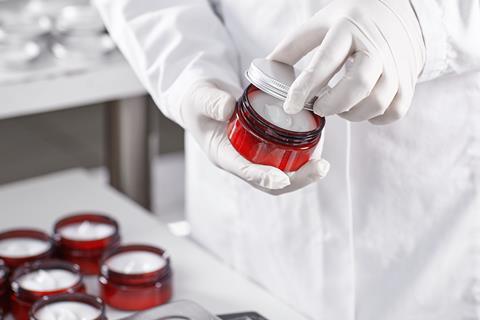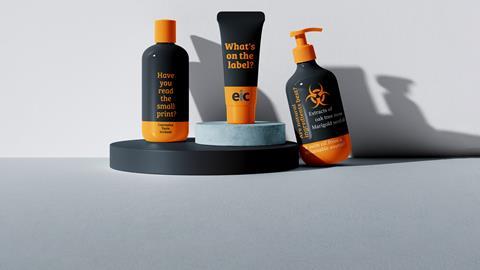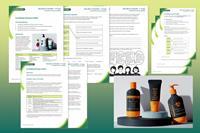Find out what words like ‘parfum’ on the side of your shampoo bottle really mean
Most of us will have paused in the supermarket aisle occasionally to scrutinise a list of food ingredients. We’re aware that we need to be conscious about what we eat, especially if we have a food intolerance or sensitivity. But are we as conscious when it comes to personal care items such as moisturisers, shampoos or face masks, and do we need to be?
Ingredients lists on cosmetics and personal care items can be difficult to make sense of due to the large number of chemical names that we don’t recognise and terms like ‘fragrance’, which seem too general to be helpful.
In your class
Take a closer look at everyday toiletry and cosmetic products by inspecting empty packaging with your 11–14 learners. Are there any ingredients they recognise? How do they feel about the ingredient names they don’t recognise? Do they think it is important to know what is in the products they use on a daily basis?
EU and UK laws require all ingredients in a cosmetic product to be listed on the label. They must be labelled using the internationally recognised names found on the International Nomenclature Cosmetic Ingredient (INCI) list, which includes over 22,000 names. This ensures that marigold seed oil is always listed as Calendula officinalis seed oil – rather than ‘Jack-on-horseback’ seed oil, for example, based on another common name for marigolds.
‘The same ingredient names are used in every European country and most countries worldwide,’ explains Emma Meredith, director general at the Cosmetic, Toiletry and Perfumery Association (CTPA). ‘This helps users to identify products with ingredients to which they know they are allergic or sensitive.’
Typical ingredients explained
With such a dizzying array of chemicals and typical ingredients lists stretching into the tens, it’s hard to spot those that crop up more often, but some do. Look out for:
- Aqua: another term for water.
- CI [number]: A number with ‘CI’ in front of it is a colour index number which refers to a very specific ingredient – for a lipstick, for example – rather than just red or orange.
- Extract: natural extracts from plants are common ingredients, but are mixtures of various compounds, which are difficult to standardise.
- Glyceryl: in front of oleate, stearate or cocoate, is a type of glycerol used as an emulsifier and to help retain moisture.
- Paraben: often attached to methyl, ethyl, propyl or butyl, is usually a preservative with a particular chemical structure. There has been debate about the safety of these chemicals due to hormone-disrupting effects and links to cancer.
- Parfum: a fragrance or aroma compound, or a blend of these compounds.
- Sodium laureth sulfate: a widely used cleaning and foaming agent made from palm or coconut oil.
- (Nano): used after an ingredient means that the ingredient has dimensions between 1–100 nm.
Scent secrets
Parfum is an exception to the ingredients listing rules – names for specific chemicals don’t have to be listed. This protects companies from having to spill the secrets of their scents, according to Emma. ‘These blends can take many years to develop, guided by the unique skills of fragrance experts, known as noses, who ensure that each blend is perfectly balanced,’ she says. ‘After such painstaking care is taken during the development process, fragrance houses are protective of the finer details of each composition.’
However, protecting trade secrets leaves consumers in the dark when it comes to evaluating the label and recent research suggests that many millions of people are sensitive to fragranced products. Ursula Klaschka, who studies hazardous substances at Ulm University of Applied Sciences in Germany, says the exemption clause for fragrances is ‘not reasonable’ in her opinion and should be removed as a first step towards safer products. Ideally, though, companies would also start changing their recipes. ‘You could produce products which have fewer fragrances,’ Ursula says. She adds that many people self-report headaches and skin allergies from fragranced products but suffer quietly or change products, while longer-term effects are even more difficult to prove.
A random selection of 100 ‘natural’ personal care products contained many chemicals classified as dangerous
As Emma points out, there are some fragrance ingredients that are listed separately on labels because they are known to cause allergies, with more due to join this select group soon. ‘Over the next couple of years, consumers may start to see some additional components listed,’ she says. All the ingredients that make up a fragrance do have to be assessed as part of a product’s overall safety assessment.
Download this
Reading comprehension, for age range 11–14
Learners will use information from an article excerpt to answer comprehension questions linked to mixtures, chemical names and allergens.
Download the worksheet and teacher notes from the Education in Chemistry website: rsc.li/3tRTOhl
Does natural mean safe?

Another issue is with the perception of natural chemicals, compared to synthetic ones. Emma says you might see an extract from a seed or a flower as being safer, when in fact, ‘whether ingredients are natural, organic or man-made has no bearing on how safe they are’. Only this year, regulation came into force preventing extracts of oak tree moss from being sold in the EU. It’s claimed these were once used in the iconic perfume Chanel No 5.
Natural extracts can also be unpredictable because they contain mixtures of different chemicals at varying concentrations depending on, for example, where a plant was grown and how the extract was prepared.
In her own research, Ursula found that a random selection of 100 natural personal care products contained many chemicals classified as dangerous under the EU’s Classifying, Labelling and Packaging Regulation – meaning they have to display a hazard symbol known as a pictogram. However, while this regulation applies to varnishes and glues, for example, it does not apply to personal care products.
So, you can’t assume that absolutely everything is listed on the label or that natural means safer. All chemicals have the potential to cause a reaction when you’re spritzing or spreading them on your skin. For those with sensitivities, it might be worth avoiding products and ingredients that seem to cause irritation – even when they provide that classic look (or smell) that you love.
More resources
- Introduce this activity using this video job profile of Sharlotte, who makes environmentally friendly beauty products.
- Plan a cross-curricular project for 14–16 learners incorporating chemistry, business studies and art to research and make cosmetic products with our Wash bag chemistry resource pack.
- Consider how biodegradable and reusable alternatives to disposable period products could reduce the amount of plastic littering our environment with these activities for 14–16 students.
- Try this class practical, suitable for 14–18 age groups, to make a soap or detergent using castor oil and either sodium hydroxide or sulfuric acid.
More resources
- Introduce your students to Sophie, a fine fragrance evaluator who helps improve and perfect fragrances created by perfumers: rsc.li/3hXpPPF
- Research and make cosmetic products with your 14–16 learners with our Wash bag chemistry resource pack, as a cross-curricular project for incorporating chemistry, business studies and art: rsc.li/3MBHryN
- Use these activities for 14–16 students to invite your students to think about how biodegradable and reusable alternatives to disposable period products could reduce the amount of plastic littering our environment: rsc.li/37nh6Eu
- Try this class practical, suitable for 14–18 age groups, to make a soap or detergent using castor oil and either sodium hydroxide or sulfuric acid: rsc.li/3i30vb7
Article by Hayley Bennett, a freelance science writer and editor based in Bristol. Resource by Kirsty Patterson, assistant editor for Resources at the Royal Society of Chemistry











1 Reader's comment